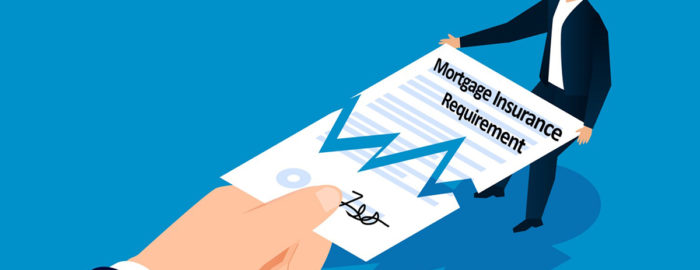Having insurance is always debatable. The debate centers on having to pay for something that you may never use so it is worth it or a necessary evil. Mortgage Insurance benefits the lender if a borrower who puts down less than 20 percent defaults on their loan. The problem is that most conventional mortgage loans over 80 percent and all FHA loans require the borrower to have this coverage.
Based on the loan-to-value and creditworthiness of the borrower, private mortgage insurance (PMI) on conventional loans can range anywhere from 0.5 percent to 2.25 percent. For a $350,000 mortgage, there would be a monthly mortgage insurance premium of $146/month on the low-end or over $600/month on the high-end.
When you close on your home, you should receive a PMI disclosure form with the signed documents that state the date when your loan is predicted to reach 80 percent of the original value. At this time, you can request that your mortgage servicer cancel the PMI. If you decide to make additional principal contributions each month, this will accelerate the date when PMI can be dropped.
Other criteria considered to cancel the PMI on your loan is:
- The request must be in writing.
- You must be current on your payments with good payment history.
- The lender may ask that you certify there are no junior liens in effect.
- If the lender is concerned that the value has declined, an appraisal may be required to show that it is eligible.
However, lenders on conventional loans are supposed to remove the PMI when the unpaid balance is 78 percent of the original purchase price.
Another built-in stopgap is the lender/servicer must end the PMI the month after you reach the midpoint of your loan’s amortization schedule. If you get a 30-year loan, that would be after the 180th payment was paid. But the borrower must be current on all payments for this termination to occur.
In recent years, there has been a rapid appreciation of many home values. With this appreciation, homeowners may be able to refinance their home and have the new amount be less than 80 percent LTV of the current appraised value therefore not requiring PMI.
By refinancing, the owner incurs the cost but eliminates the cost of the PMI. You can calculate the savings by subtracting the new principal and interest payment from the old principal and interest with the PMI. Then, divide your savings into the cost of refinancing to determine the number of months required to recapture the cost.
FHA loans have two types of PMI: up-front and monthly. For loans with FHA case numbers assigned on or after June 3, 2013, with LTV percent greater than 90 percent, the MIP will be paid for the entire term of the loan. If that is the case, refinancing on a conventional loan is the only way to eliminate the MIP. For loans with original LTV percent less than 90 percent, the MIP is collected for 11 years until the balance is 78 percent of the original amount.
Borrowers may not have enough resources for a large down payment when buying a home. It is understandable to get the best mortgage available to buy a home. The follow-up goal should be to manage the mortgage to lower overall costs. In this post, I talked about eliminating the PMI.
I can provide Insider Information on Fairfax VA homes for sale. Get you a FREE Market Snapshot Report of Your Northern Virginia Home’s Value, or Search All Northern Virginia Homes For Sale. Put that data you need at the tips of your fingers!


